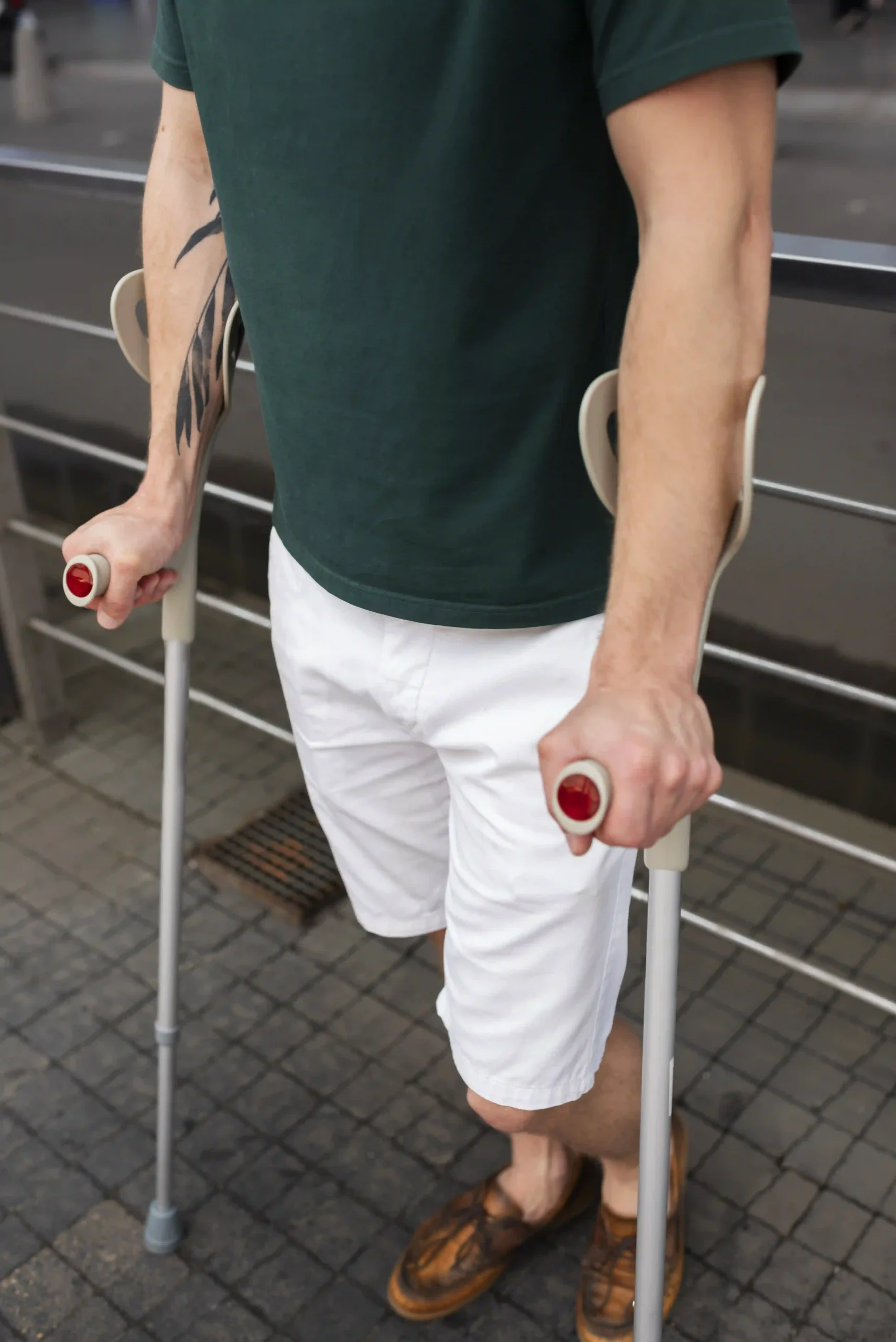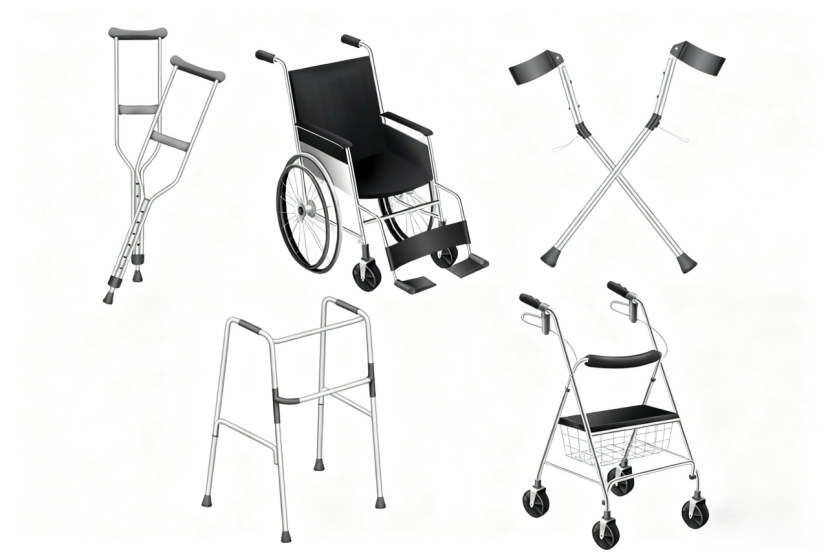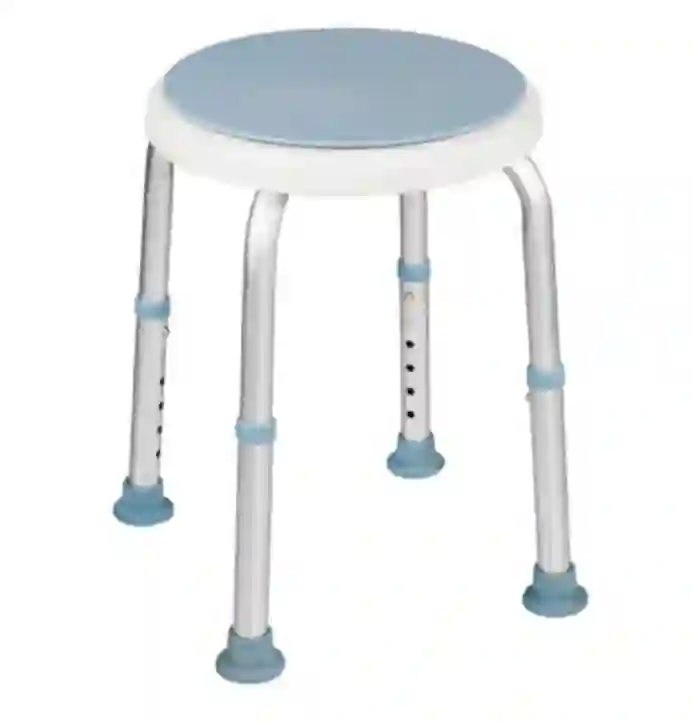Best Crutches After Knee Surgery: Are Forearm or Underarm Better?
Time : Sep 24, 2025 View : 1,574
The recovery process from knee replacement surgery needs specific mobility tools beyond rest because they provide essential support for safe healing. Crutches serve as the primary support tool for patients who need to recover from knee surgery. The selection of appropriate crutches following knee surgery operations determines how comfortable you will be and how quickly your body will heal. The selection of appropriate crutches depends on understanding the differences between underarm and forearm crutches since these options exist for patients to choose from.

Recovery Needs After Knee Surgery
The ability to put weight on the operated leg becomes restricted after knee surgery which includes both total replacement and less invasive procedures. The process of recovery requires patients to use mobility aids because their operated leg needs protection.
Common Mobility Challenges Post-Surgery
Patients experience multiple difficulties when standing and walking because their joints become stiff and their muscles weaken while their range of motion decreases and they experience pain. The combination of these issues makes it difficult for patients to perform daily tasks while simultaneously raising their danger of experiencing falls.
Importance of Choosing the Right Walking Aid
The correct walking aid provides stability while it decreases the pressure on healing joints. The device enables safe navigation through different settings which helps patients achieve independence and speeds up their recovery process.
Types of Crutches Available for Post-Knee Surgery
The two primary types of crutches include underarm (axillary) crutches and forearm (elbow) crutches which serve different needs for users with various mobility levels.
Features of Underarm Crutches
The simple design of underarm crutches makes them a preferred choice for knee surgery recovery because they are easy to operate.
Design and Support Mechanism
The equipment includes padded shoulder sections that sit under the armpits and grip handles positioned at mid-level for stability. Users support their body weight through their arms while maintaining pressure away from their recovering leg.
Pros and Cons for Post-Surgery Use
Pros include:
- Easy to use for beginners
- Good weight distribution across upper body
- Readily available in hospitals
Cons include:
- Risk of nerve compression in armpits
- Bulky design may hinder maneuverability in tight spaces
- Less ergonomic over extended use
Features of Forearm Crutches
The use of forearm crutches provides users with a more portable option that requires greater involvement of the arms.
Structure and Arm Engagement
The crutches feature cuffs that encircle the forearms together with ergonomic handgrip designs. The weight-bearing function of these crutches extends down the arms to include both wrist and elbow joints.
Pros and Cons for Recovery Support
Pros include:
- Better suited for long-term use
- Allows greater freedom of movement
- Reduces risk of underarm irritation or nerve damage
Cons include:
- Requires better balance and upper-body strength
- May take longer to learn proper technique
Comparing Forearm and Underarm Crutches
The selection between these two options depends on multiple elements which extend past individual taste choices.
Comfort and Ergonomics During Extended Use
The design of forearm crutches provides better ergonomics because they distribute pressure away from the sensitive underarm region. The forearm crutch features a comfortable and long-lasting handgrip that distributes the pressure force across the handgrip area.
Weight Distribution and Joint Pressure
The weight distribution of underarm crutches spreads across a wider area yet leads to discomfort when used for extended periods. The weight distribution of forearm crutches passes through hands and wrists which might be more suitable for people who have strong upper body strength.
Ease of Maneuverability in Daily Activities
The design of forearm crutches makes them more suitable for use in crowded or tight spaces because they are lighter and more manageable than the heavier underarm crutches.
Suitability for Short-Term vs Long-Term Use
Short-term recovery needs underarm crutches because they are easy to use. Forearm crutches work best for long-term rehabilitation because they provide better comfort during extended use.
Factors to Consider When Selecting Crutches After Knee Surgery
Your selection needs to consider your current physical state and your daily activities.
Patient Strength, Balance, and Coordination
People who have weak upper body muscles or poor balance should start with underarm crutches because they provide better support. Active people who are athletic tend to prefer forearm crutches because they offer more flexibility.
Duration of Expected Use During Recovery
Short-term users find underarm designs convenient to use. The forearm options deliver better long-term comfort for rehabilitation plans that exceed several weeks or months.
Lifestyle, Environment, and Daily Routines
The location where you will use your crutches determines whether you need forearm crutches for narrow hallways or underarm crutches for hospital corridors. Forearm crutches work best in tight areas yet underarm crutches provide better stability when walking on open spaces.

Alternatives to Traditional Crutches for Knee Surgery Recovery
Traditional crutches serve as common post-surgical aids yet alternative devices exist which might provide better support based on your specific needs or personal choices.
Knee Scooters as a Hands-Free Option
The wheeled devices enable users to place their knee on a cushioned platform while using their healthy leg for movement because they help people who have trouble staying balanced on two crutches.
Walkers with Forearm Support Attachments
The forearm rests on walkers help users maintain stability while they walk because they do not need to hold the walker with their full grip strength. These devices help users who need support during their recovery process or when they experience fatigue.
Canes for Later Stages of Rehabilitation
The process of healing requires patients to move from using crutches to a cane because this transition enables them to walk naturally while receiving additional support during unstable moments.
Tips for Safe and Effective Use of Crutches After Surgery
The correct application of the device helps prevent accidents such as falls and skin irritation that can occur during the recovery process.
Proper Fitting and Adjustment Techniques
The height adjustment requires users to extend or shorten the extension part until they reach the desired height. The handles should be at a height where the elbows form a 30-degree angle when gripping them for optimal posture and both handles should match in height.
Preventing Skin Irritation and Nerve Compression
The weight of your body should never rest on your underarms since you must distribute your weight through your hands. The selection of models should focus on grip or cuff designs which provide cushioning to minimize skin friction when wearing them for long periods.
Navigating Stairs, Slopes, and Uneven Surfaces Safely
When using stairs you should lead with your stronger leg first when ascending and then bring your injured leg after you. When descending stairs you should start with your injured side followed by your stronger side. If you are unsure about your stability on slopes or uneven surfaces you should request help from someone else.
Xunyu Medical: Trusted Supplier for Mobility Aids
Foshan Xunyu Medical Technology Co. Ltd has established itself as a dependable global supplier of quality mobility equipment following knee surgery.
Overview of Xunyu Medical’s Product Offerings
Xunyu Medical provides a diverse range of mobility and safety aids.
Bedside Handrails for In-Home Safety
Steel main frame detachable / no drilling required / foam grip
Durable and Adjustable Crutches
The forearm crutch features anodized aluminium legs with rubber tips that provide comfort to users.
Lightweight Wheelchairs for Easy Transport
Our medical products serve more than functionality because we implement strict quality control methods to verify each product meets worldwide standards.
Bath Chairs Designed for Stability and Comfort
The product features ergonomic design with anti-slip functionality that makes it suitable for home post-surgical hygiene care.

Walking Aids Supporting All Phases of Mobility Recovery
Xunyu provides complete rehabilitation solutions which match the needs of patients who are starting to walk after surgery and those who need canes for support.
Summary of Key Points on Choosing Between Forearm and Underarm Crutches
People choose between forearm and underarm crutches based on their individual requirements.
Matching the Right Type with Individual Needs
The selection of either model type depends on upper body strength and balance ability and expected usage duration because short-term users tend to choose underarms but long-term users find better support in forearms.
Balancing Comfort, Support, and Mobility Goals
The underarm area provides better support and ease of use during the first few days after surgery but the forearm area offers better comfort and flexibility. A person should choose a balance between underarm and forearm support for safe postoperative recovery based on their lifestyle and medical professional recommendations.
FAQs:
Q1: Which crutches are best for total knee replacement patients?
A: Underarm crutches suit most for short-term use post-surgery, offering stable support. Forearm crutches are better for extended recovery, reducing armpit pressure as healing progresses.
Q2: How long do patients use crutches after knee surgery?
A: Crutch use typically lasts 2-6 weeks, depending on surgery complexity and healing speed. Always consult your surgeon before stopping to avoid complications from early weight-bearing.
Q3: Can patients switch from underarm to forearm crutches during recovery?
A: Yes, patients start with underarm crutches and may transition to forearm crutches as strength improves, enhancing mobility and reducing armpit discomfort.


